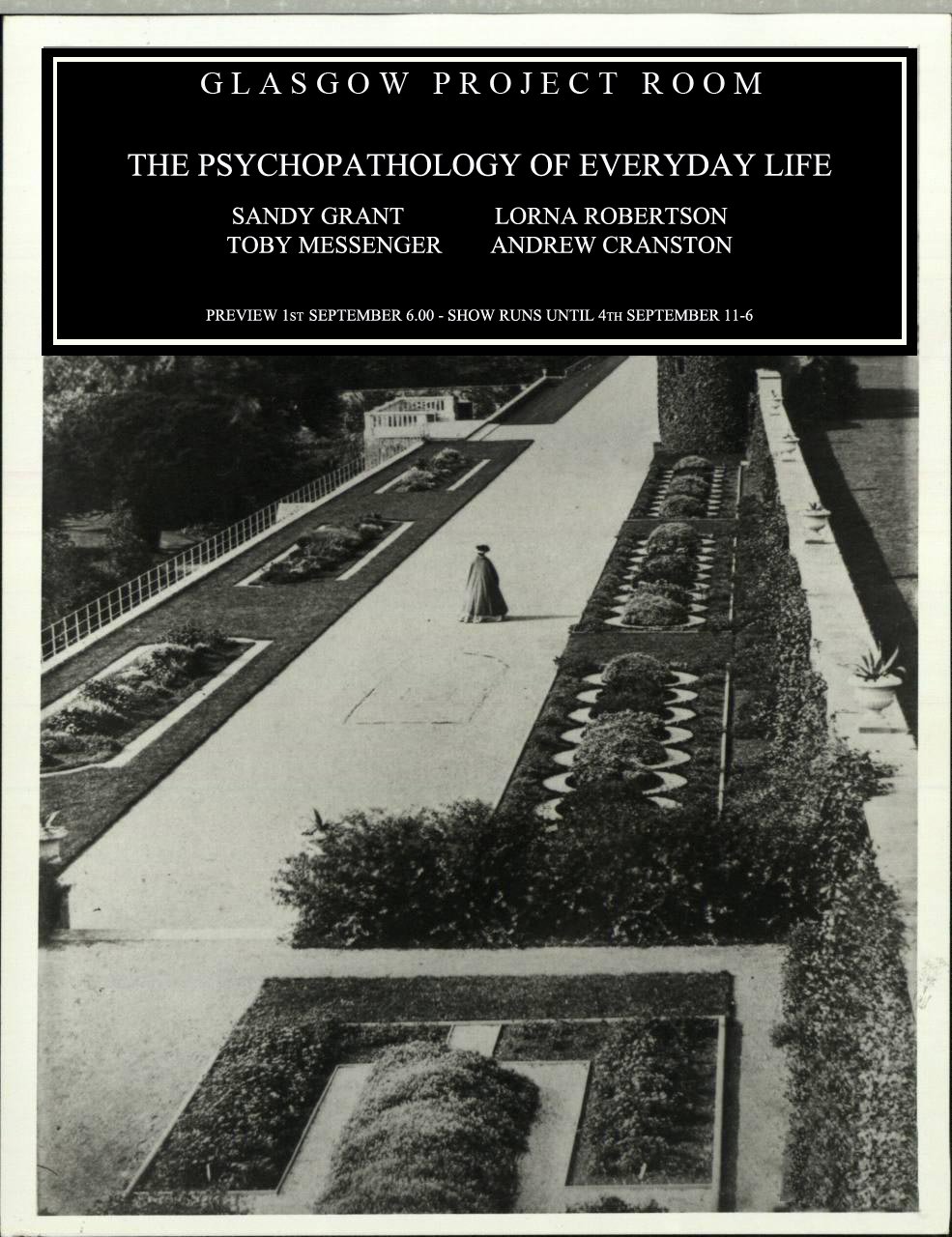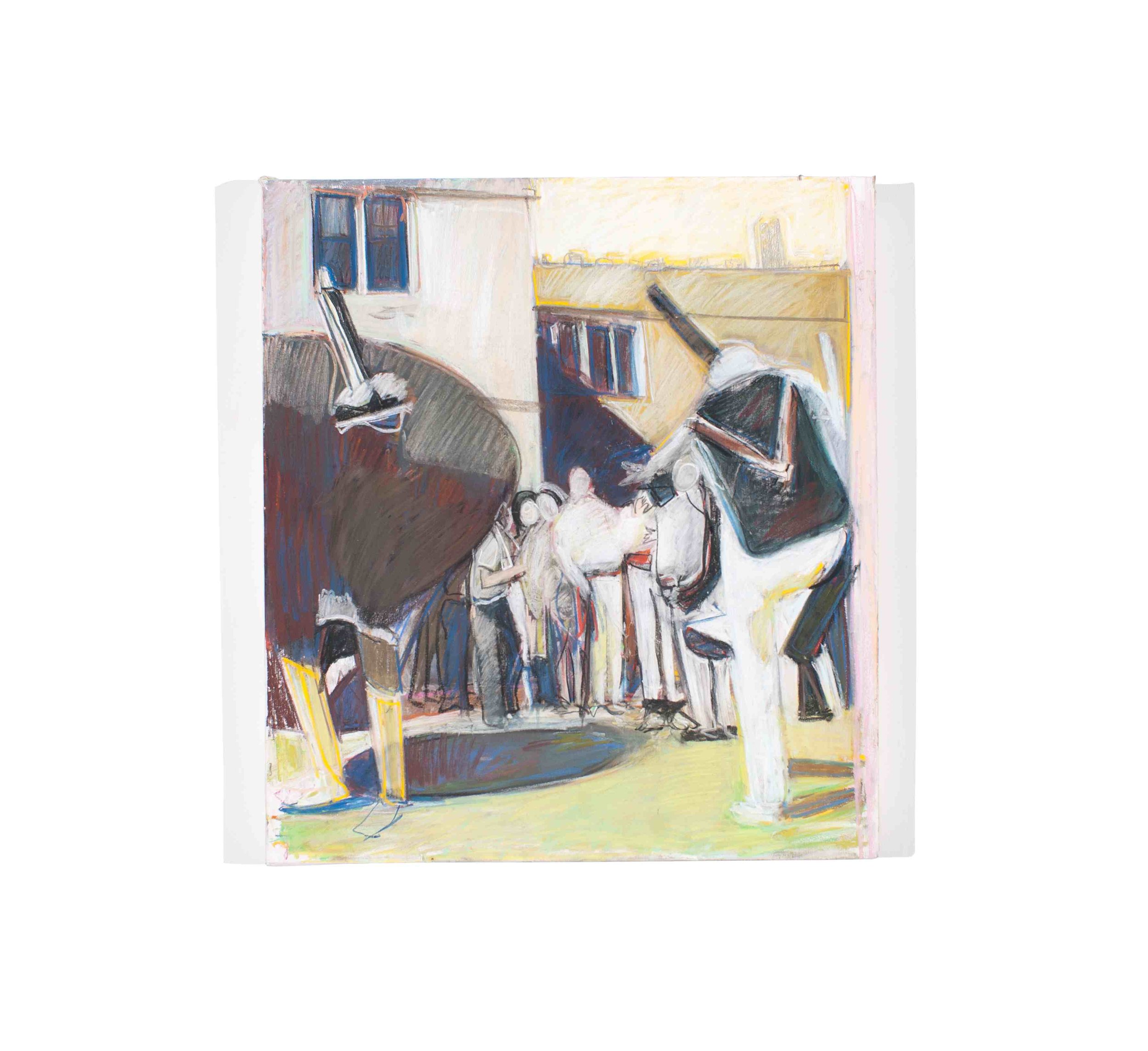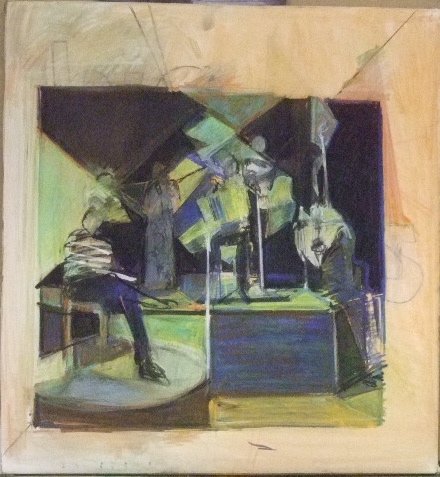
After Paul Nash - Shell Guide
Chalk pastel on paper/ on card - 2008/2009
From The Psychopathology of Everyday Life at glasgow project room - Andrew Cranston, Lorna Robertson, Sandy Grant & Toby Messenger - September 2011
(Essay by Andrew Cranston below)
THE PSYCHOPATHOLOGY OF EVERYDAY LIFE
SANDY GRANT LORNA ROBERTSON TOBY MESSENGER ANDREW CRANSTON
GLASGOW PROJECT ROOM TRONGATE 103
‘Tell it straight but tell it sly’1.
This exhibition makes public evidence of certain endeavours that have been going on privately on the 4th floor of 103 Trongate in the last year.
By moving their work out of the safety of their studios these artists leave their work to the mercy and violence of the world at large.
On the face of it these four painters use real recognizablethings, images and objects and spaces that you could name and see and touch.
The straightest things can be the strangest, un-nerving us through their apparent normality. And ‘Real’ is referred to it is in the knowledge that there might be no such thing or at least that its definition is questionable. ‘We are so easily baffled by appearances’2 and the trust in what we have before us isdependent on a functioning optic nerve and a stable cerebralcortex. So if reality is physically unstable then Painters are in the business of framing it, fixing it, freezing it. ‘A picture is a fact.’3
These Painters are deeply interested in the surface, the outer skin, the earths crust. What seems to be visible but it is with knowledge of what lies beneath, or behind the façade. Painting is of course not real. It is illusory, a version of the world, in essence a conceptual activity, a beautiful form of lying. We are lying and by declaring this, by being upfront about our essential deception we are telling the truth.
Wittgenstein would approve… probably.
Years ago on television in the 1970s John Berger, resplendent in flares, leather jacket and kipper tie discussed how ideology/information affects the images we receive.
To illustrate he presented to the viewers at home Van Gogh’s ‘field with crows’. He then told us that after making this painting Vincent had taken a pistol and shot himself in the stomach and then died in agony three days later. The nation was collectively moved and brought this new knowledge to this painting of a field in Southern France. The image was lost, replaced by another image which looked the same but felt different. Innocence was lost. This could be applied to all of Van Gogh’s work, the knowledge and myth of him, as an emotional guidebook.
We bring psychology to those sunflowers of his. Flower arranging + psychosis. This process has it seems happened to everything. Reality and fantasy are actually very close. Everything around us is loaded with the baggage of the past, and the context of the present. Nothing is neutral.
Fantasy has to be based on something real and realism often has an unreal, hidden, 'other' or fantasy element in it. Empirical Reality is full of love, melancholy, joy, fear, ecstasy, anxiety, etc. And there is reverie in the everyday. And psychopathology too.
The triggers for emotional responses might have changed, theperimeters moved. What scared us before now assures us. We laugh at Dracula’s castle but shudder at neatly kept suburban gardens. And yet our reflexes remain primal and under the surface of we are still cave-dwellers of a sort. This exhibition promises its audience ‘equal measures of mystery and resolution’4
It is on for a full four days and thereafter these artists will retreat back to their studios, close - and lock - their doors. Thinking is much more interesting inside the box.
1. E.M Forster 2. Hugh MacDiarmid 3. Ludwig Wittgenstein 4. Pete Firmin





